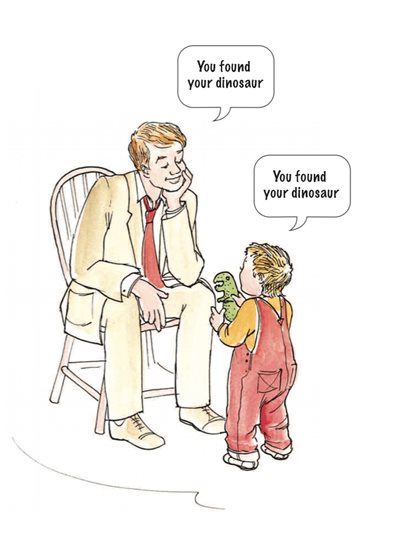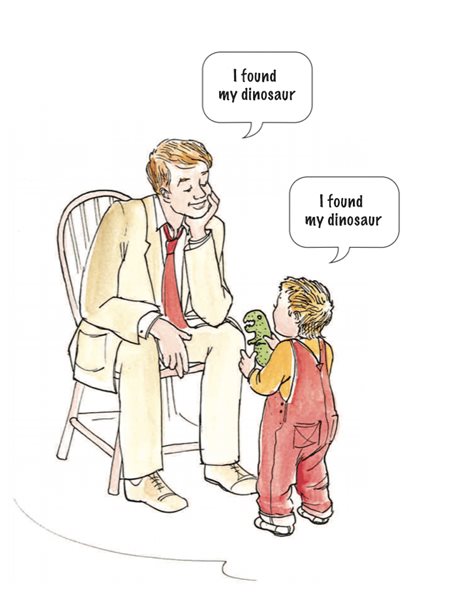Helping Children Who Use Echolalia

Some children on the autism spectrum communicate by using echolalia, which means they copy what they’ve heard. They may copy words right after they hear them, or they might remember something they’ve heard before and use it later on. Some echolalia isn’t intended to send a direct message to someone, such as when a child plays alone and recites lines from a video. However, much of children’s echolalia is communicative and has a purpose.
It can be tricky to figure out what echolalia means, especially if a child echoes something they heard somewhere else in a totally different situation. For example, a child might say “Everybody sit at the table” to ask for a snack at home, because they hear this every day at daycare when it’s snack time. But because it’s used out of context, this can lead to confusion as their words don’t match what they really mean.
The key to helping a child who uses echolalia is to figure out the meaning behind the echolalia, and then respond in a way that helps them learn. You can do this by being your child’s “detective”, and then being their interpreter.
Be a detective – Follow your child’s lead
A little detective work can help you figure out what your child is trying to tell you when they use echolalia. Just like a detective, you’ll need to look for clues that let you know the meaning behind your child’s message. In order to do this, you’ll need to follow your child’s lead.
Following your child’s lead involves:
- Observing your child and his interests – Watch your child and notice what they are doing and where they are looking when they use echolalia. Are they looking at something, touching an object, trying to get your attention, answering a question, playing alone? Do they seem happy, frustrated, upset, excited? These observations give clues about the context in which your child uses echolalia.
- Listening carefully to what they say – It’s important to listen to the words your child uses. Do they echo exactly what you say or do they change it a bit ? Are they echoing something they heard from a video, from school, or somewhere else? What was said right before your child echoed? Listening carefully will give you more clues about what your child is trying to communicate.
- Waiting, without talking – If you never stop and wait during your interactions with your child, you will miss many subtle clues, and your child will not have as many opportunities to send you messages. Waiting patiently for your child to send you a message also lets them know that their message is important to you.
By observing, listening, and waiting for your child when you interact together, you will gather many clues about what your child is trying to tell you. You observations may reveal that they are playing alone and not sending you a message with their echolalia. But if your detective work reveals that your child is looking at something or trying to get your attention when they echo, you can use your observations to help you figure out the meaning behind their message.
Research has shown that children who use echolalia benefit when adults follow their lead.
Research has shown that children who use echolalia benefit when adults follow their lead [1,2]. When adults direct the interaction with a lot of questions and commands, echolalic children tend to repeat what the adults say right away without understanding what they are echoing. However, when adults follow the child’s lead, children tend to send messages that show more understanding.
Be an interpreter – Respond to your child’s messages
Once you have figured out the meaning behind your child’s echolalia, you are ready to respond in a way that will help them learn. This means you’ll need to be your child’s interpreter. Just as an interpreter translates words into another language, you can interpret your child’s echoed words into a message that reflects what they are really trying to say.
Interpreting your child’s echolalia involves:
- Saying it for them as they would if they could (from their point of view)
- Giving your child an exact model they can learn from (using correct grammar)
Interpreting a child who uses echolalia means saying it exactly as they would if they could. Sometimes you might need to use the word “I” or “me”, as if you were speaking from your child’s point of view. This might feel unnatural at first. But by giving your child the words they could use in that situation, it will help them learn how to communicate their message more appropriately next time [1].
Here’s an example of how to interpret echolalia:

When Christopher found his missing dinosaur, dad says ‘You found your dinosaur’, and Christopher repeats exactly what his dad says.

When dad interprets by saying “I found my dinosaur,” Christopher learns a new way to tell dad about his discovery.
When you interpret your child’s message, they may not repeat what you say right away. They've already communicated their message to you, so there’s no need for them to say it again in a different way. But because you’ve shown them what they could have said in that situation, they may use your sentence the next time they want to communicate the same idea.
By doing some detective work and interpreting your child’s echolalia, you will provide language models that show them more flexible and appropriate ways to send their messages. And because you’ve matched what you said to what your child really meant, it’s more likely that they’ll remember your model and use it in the future .
The tips in this article are based on strategies from More Than Words® — The Hanen Program® for Parents of Autistic Children or Children Who May Benefit From Social Communication Support and the More Than Words guidebook.
Similar articles by tag:
Autism | More Than Words | Social Communication | Follow the Child’s Lead | Interpret | ASD | Echolalia
